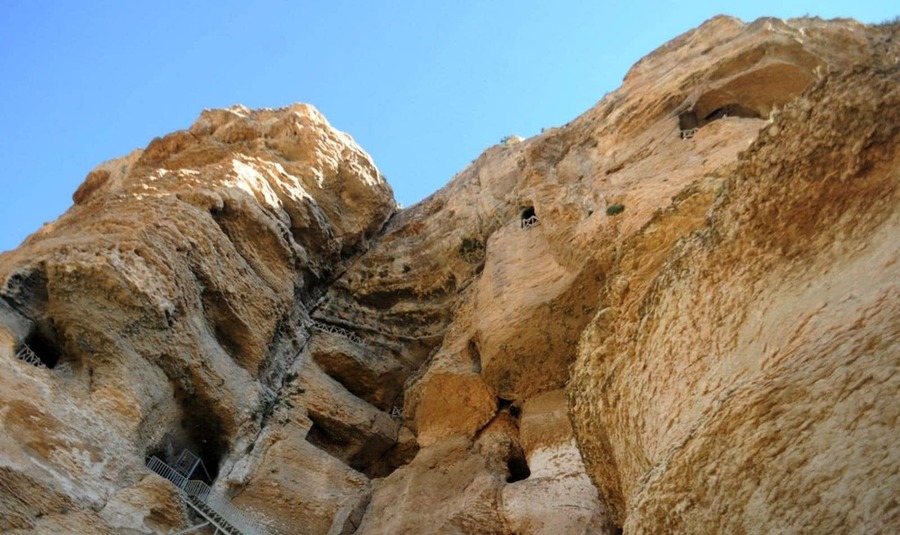Karaftu is an interesting hollow building made of stone in the East part of Kurdistan, a cave that is made by nature and humans have completed it.
The Karaftu Cave located on the east of Saqqez City is made of two parts; natural and artificial. The cave is almost 70 kilometers away from Saqqez.
This cave which is made of four floors as long as 750 meters and has several branches is one of the great natural caves in Kurdistan and the world.
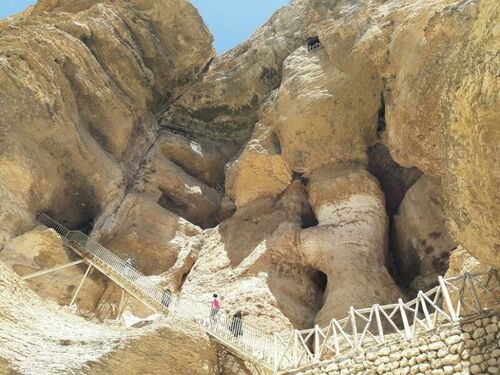
The history of this cave being created goes back to 65 to 250 million years ago which is known as the third period of geology. This cave appeared out of water when the lands began to emerge out of water. There are a number of sea animal fossils left on the walls of this cave which prove this fact about it.
The natural part of the cave consists of some entrances, corridors, and holes which shows the architectural art of nature. Later, people changed the structure of the cave in various periods in order to live in it and completed it on four floors.
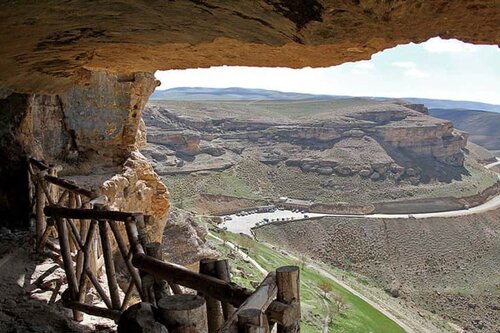
Some researchers date back the residence of people in this cave to more than 7000 years ago, however, the carvings on the stones indicate that the Salukites who were the heir of Alexander of Macedonia used this cave as a temple and a shelter and later during the Parthian Empire and then the Sassanids the cave had been used as a temple. After Islam spread in this region, the cave was used as a shelter and a residency for some people.
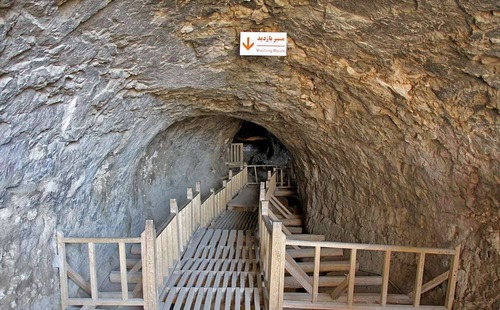
One of the most important carvings of this cave is on the third floor hanging over one of the room doors and written in Greek: "Here is Hercules's home, if anyone enters this house, they will be safe."
Hercules is a Greek god and one of the great champions in Greek mythology and stories, thus, the experts believe this cave was a Greek temple who were later expelled by the Parthians.
The height of the entrance door of this cave from the hill it has been built on is about 25 meters. People used to enter it by climbing ropes but in recent years, staircases have been built for the tourists to make them able to climb the cave easily.
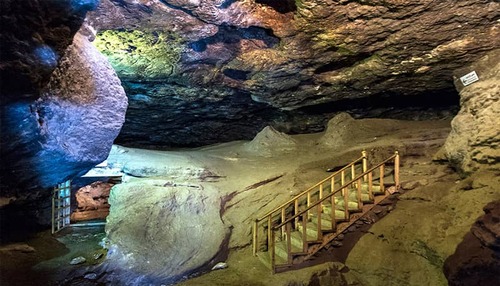
As you enter the cave door, you are faced with an ancient history, a series of questions, mysteries and illustrations, and fascinating paintings.
Who has lived here? How did they carve these large sized rocks and with what kind of tools did they make these halls and corridors? And tens of other questions that may remain a secret in history.
Humans have made the cave a four separate floor building and there are several corridors, platforms, doors, windows, and special rooms on each of these floors.
The first floor of this cave is made of two rooms and a long corridor with some windows to let light and air come inside the floor.
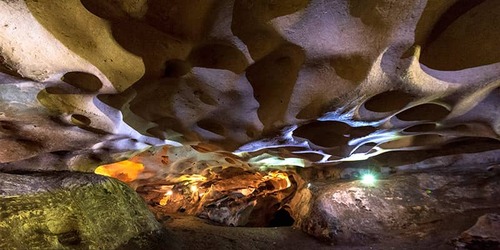
In order to go into the other floors, several stairs have been made of stone to make it easier to go upstairs or downstairs.
The second floor is made of a large hall that is the natural part of the cave and three rooms that are linked together. In the third room, there is a platform that seems to have been a place for praying.
After visiting the first and second floors, we reach the most important and most beautiful floor of this cave which is the third floor. The experts identify this floor as the most important part of the cave for the special structure it has been made into.

Due to the destruction of most of the rooms on this floor, it is not clear how many rooms it possessed, however, two rooms are remaining right now that are decorated with particular paintings. As we mentioned earlier, the Greek carved rock belonging to Hercules, one of the Greek gods, is hanged over one of this floor's rooms.
The path to the fourth floor is via a natural corridor. This floor is made of several windows, holes, and corners that might have been used as storage rooms for keeping beans and the same products and the water supply of the cave. However, the most important part of the cave is a large natural hall that is known as Armitaj or shellfish hall.
Armitaj means high and it was the place of the Parthian empire's reign. Since this place has been decayed, this hall's formation has changed and now it looks like a big shellfish which gives the place a spectacular view.
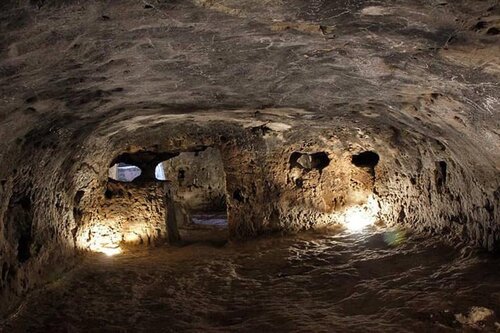
At the back of the cave, there are some corridors and chambers that one must move forward while lying on their stomach. Apparently, the floors were linked together from the back part in the past but what is clear right now is that no one has been able to reach the farthest part of that corner on the back of the cave which has led to many tales and myths about this cave that are popular among the people of this region. This point has even been mentioned in the works of authors of Saqqez city who have written stories and novels.
The geographical location of this cave has made it cool in the summer and warm during cold seasons.
In some parts, the dropped water from the ceiling has made small puddles. There are also some bowl-shaped carvings on the flat floor of this cave to collect the water in the cave.
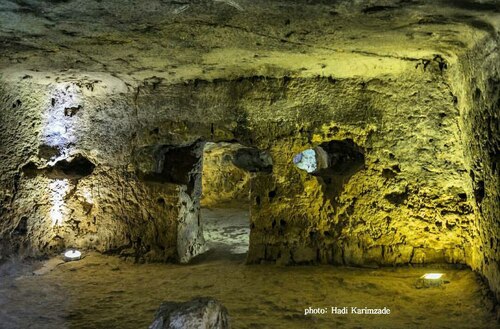
There are many paintings on the walls of this cave like a rhombus, a human's hand, and deer which indicates the sacredness of this cave.
Nobody has been able to reach the farthest parts of this cave so far nor they have been able to draw a map of this cave completely. Perhaps in the future, the secrets of this cave remain hidden forever but what is important is that Karaftu is a valuable and unique heritage of human history in Kurdistan.

